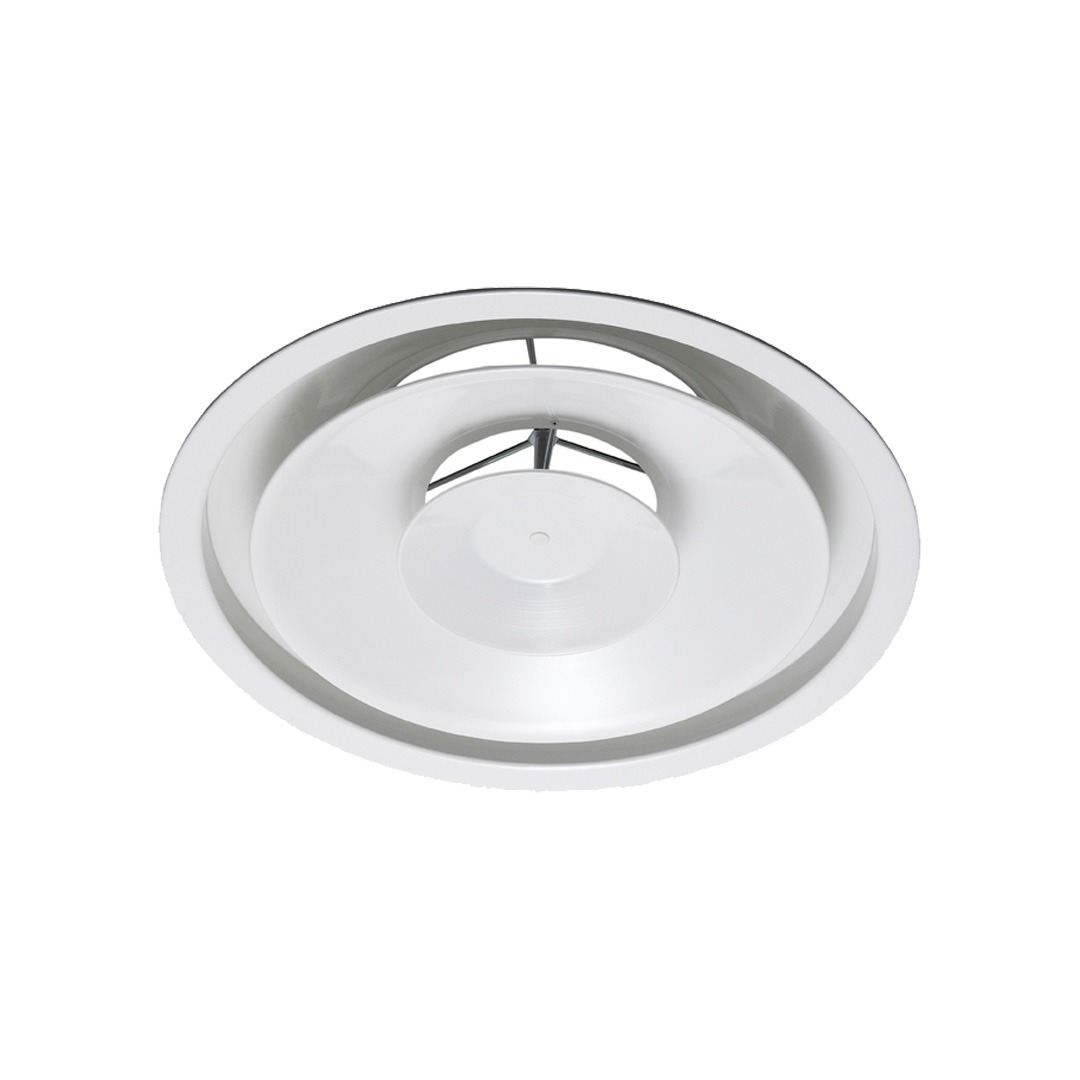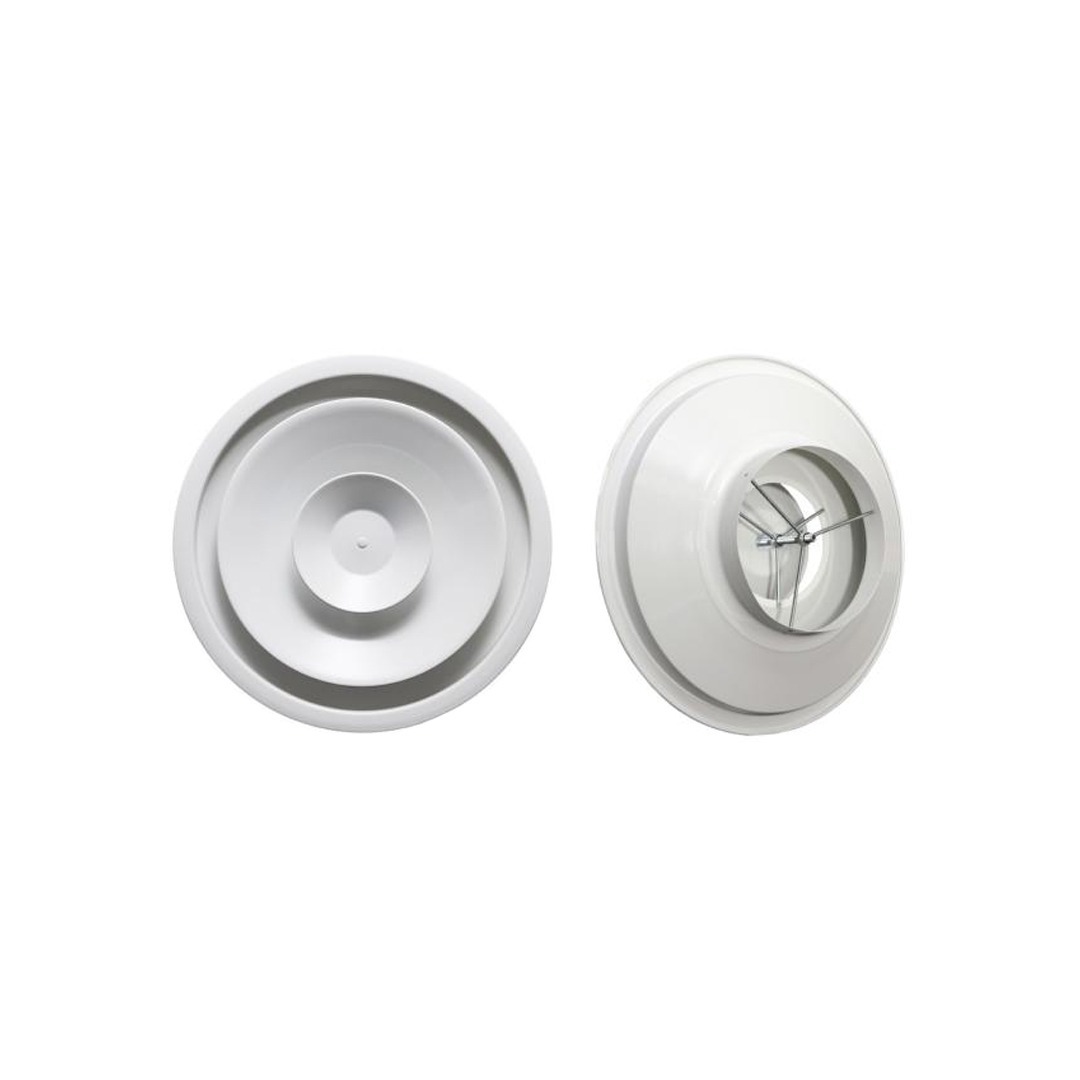KU5 and KU6: Series of ceiling cone diffusers, with diameter from 100 to 630mm, composed by an external cone and by a central adjustable section with cones that may be adjusted for horizontal or vertical throw.
CHARACTERISTICS:
- Depending on the version, the components can be made of alluminum, carbon steel or ABS, see the diagram on the following pages for details.
- Standard finish painted white RAL 9010 or RAL 9003, different paints on request.
- The KU series diffusers are normally fixed to the plenum by means of lateral screws.
- A flexible duct can be attached to the diffuser neck.
FIELD OF USE AND SETTING:
- KU diffusers are suitable for false ceiling installation in rooms with a height between 2.5 and 5 meters such as offices, shops, meeting rooms, corridors, surgeries and similar.
- They are suitable for both supply and extract air.
- Lowering the central cones it is possible to have the air outlet along the ceiling with horizontal throw.
- This regulation is indicated above all for use in cooling, but guarantees good conditions also for use in heating when there is more than one diffuser in the room.
- Raising the central cones is possible to throw the air downwards. This setting is therefore suitable for use in heating only or in extraction.




